Samegrelo, Georgia

Tours, Attractions and Things To Do in Samegrelo
Samegrelo Travel Guide
Samegrelo, also known as Mingrelia, is a captivating historical region located in western Georgia. The area is renowned for its exceptional cuisine and abundant attractions, including the ruins of the ancient kingdom of Colchis' capital city, Archaeopolis, which can now be found in the village of Nokalakevi. Inhabited by the Mingrelians, a distinct sub-ethnic group with their own language, Samegrelo offers a unique cultural experience and breathtaking natural sites that are well worth visiting.
Best Time To Visit
Tourism in Samegrelo is largely influenced by the region's climate. Being situated on the western coast of Georgia, the area overlooks the Black Sea, resulting in a predominantly humid weather throughout most of its territory. Summer is the optimal season to visit Mingrelia, as it offers pleasant sunny days without excessive heat or scorching temperatures, making it the perfect time to explore the region's main attraction, Tobavarchkhili Lake.
Although exploring Samegrelo sights is still enjoyable during the spring and fall seasons, it's important to note that the off-season is often accompanied by lengthy rainfalls. In winter, temperatures rarely drop below 0°C, so touring around the region is easily doable without any hindrance.
What to Do in Samegrelo
Landmarks and Attractions in Samegrelo

Martvili Canyon is a beloved destination among tourists, who come to appreciate its stunning beauty throughout the warm season. The meandering cliffs are caressed by the turquoise waters of the Abasha River, which create picturesque waterfalls at certain points along its flow. Visitors to the canyons can embark on a thrilling rafting excursion down the river, providing them with an unparalleled view of the pride of Samegrelo from its most optimal angles.
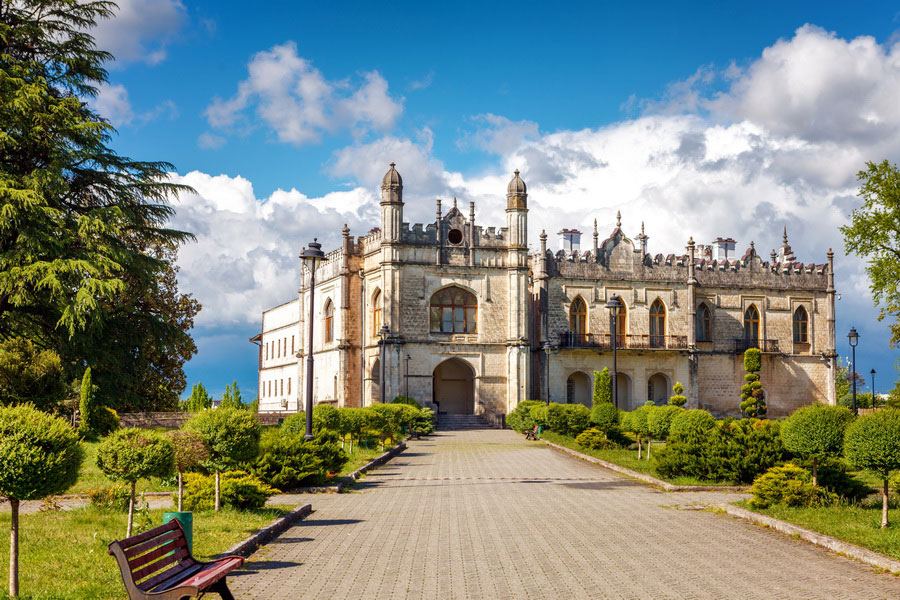
The Dadiani Palace, once the regal home of the Mingrelian princely family, boasts striking architectural features that set it apart. As the crown jewel of Zugdidi, the regional capital, the palace now houses a museum within its walls. This museum showcases a remarkable collection of rare household artifacts and genuine relics, including items once used by Napoleon Bonaparte himself. The Dadiani family received furnishings, decorative elements, and even the death mask of the French emperor when a princess married Napoleon's nephew. When you visit the palace, be sure to wander through the impeccably maintained gardens, complete with vibrant flower beds, elegant sculptures, serene fountains, and inviting, tree-lined walkways.

Zugdidi Botanical Garden invites you to explore its vast 26-hectare expanse, featuring an abundant collection of diverse tree and shrub species. The garden's history traces back to a lavish park at the Dadiani Palace, where the cultivation of rare plants from around the world began. These exotic specimens were gathered from Southeast Asia, North and South America, Mediterranean countries, and as far as India and Japan. Out of the 500 plant species found in the garden, about 80 are considered exotic, including sequoias, Himalayan cedars, various magnolias and oaks, as well as flora native to subtropical climates.
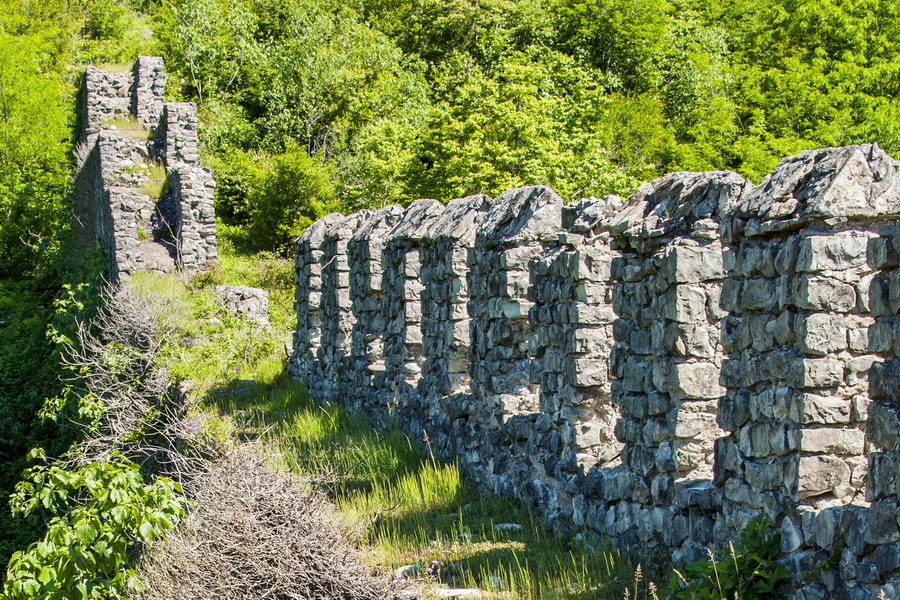
Nestled in the village of Nokalakevi, the Archaeopolis Fortress stands as a beautifully preserved testament to Georgia's abundant history. This abandoned stronghold is said to be where the Argonauts journeyed to retrieve the fabled Golden Fleece. The ancient city, protected by formidable walls, has endured through multiple eras. Within the fortress, the Forty St. Sebastian Martyrs Church was constructed during the early Christian period. Remarkably, the walls of the church still house frescoes from the early Middle Ages.
Tobavarchkhili Lake is a stunning alpine lake situated over 2,600 meters above sea level. Nestled amidst sharp mountain peaks, the lake's surface mirrors these towering heights, creating a breathtaking panorama. The view is particularly awe-inspiring on sunny days when the waters of Tobavarchkhili shimmer in a vivid, bright blue hue.
Reaching the lake is no small feat, as it demands both time and effort from those journeying from Georgia's major cities. From the village of Mukhuri, travelers must navigate country roads using rugged off-road vehicles or jeeps. A 1.5-kilometer hiking trail commences from the Gvamarda tract, which visitors can tackle on foot or rent a horse from local residents to traverse on horseback. The route to Tobavarchkhili is complex and challenging in certain areas, so it is recommended to explore this unique Samegrelo attraction as part of an organized group.

Kolkheti National Park and Lake Paliastomi are situated in the Kolkheti lowlands, where the Rioni River and its tributaries have meandered for thousands of years, continually altering their paths. The sea's proximity lends a distinct humidity to the region, fostering a unique flora and fauna across the expansive forests and island-studded shoals. Here, you can spot creatures such as guinea pigs, jackals, wild ducks, and occasionally pelicans. A visit to the national park would not be complete without a stop at the shores of Lake Paliastomi, where the water seamlessly blends with the sky and is enveloped by dense forests. During the off-season, you can observe migrating birds, many of which are exclusive to the wild.
To fully appreciate Kolkheti National Park, visitors can embark on guided boat tours. Boats are available for rent and visitor registration at the National Park Administration building. The vessels can accommodate both small and large groups, ranging from 8 to 20 people. If you're visiting the park independently, it's advisable to book your seats in advance.
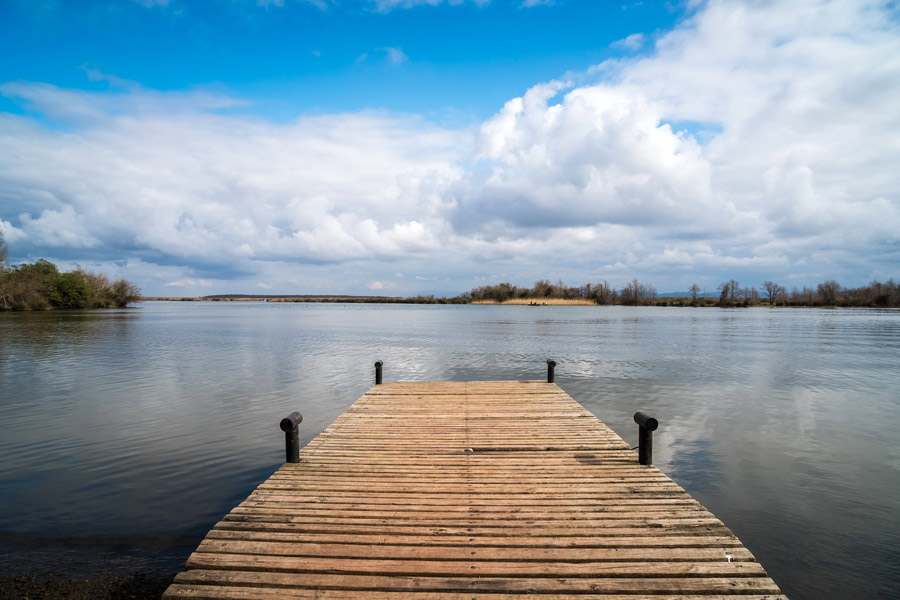
The Rukhi Fortress, once the home of the distinguished Dadiani Dukes, now stands as the most expansive citadel in the area. Despite being deserted and having its walls and towers enveloped in moss, the fortress remains just as awe-inspiring as any restored Georgian stronghold. With a history steeped in intense battles, particularly against the Turks, the Rukhi Fortress is a mere 7 kilometers from Zugdidi, making it a must-see attraction to include in your itinerary.
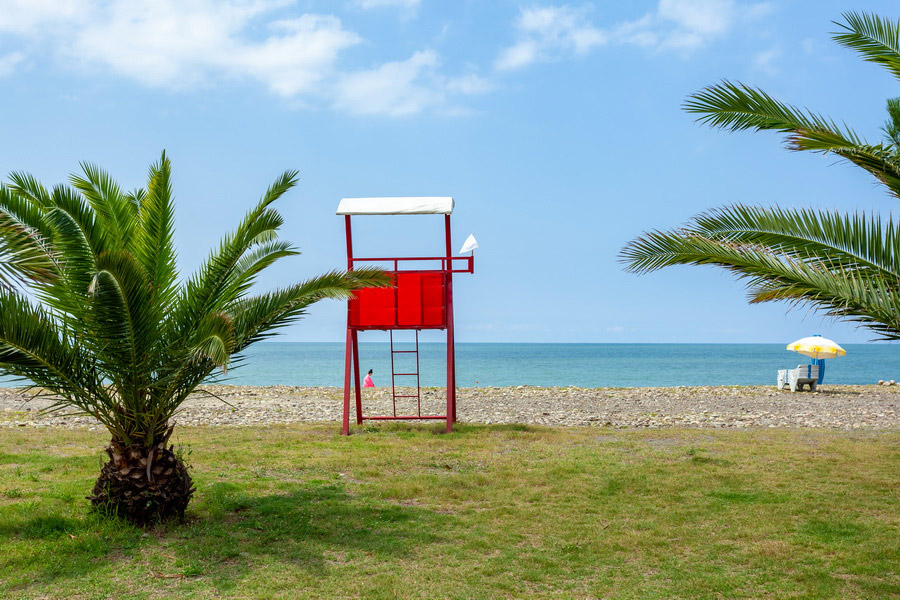
The resort town of Anaklia is sure to captivate anyone exploring Samegrelo. What was once a humble village with crumbling infrastructure has transformed into a thriving destination, boasting numerous hotels and striking architectural marvels. Unlike Batumi, the renowned Black Sea tourism hotspot, Anaklia is graced with sandy beaches. A 540-meter bridge connects the resort town to another picturesque beachfront village, Ganmukhuri, which is also well worth a visit to bask in the warm sea, luxuriate on the soft sands, and soak up the sun's rays.
Mingrelian Culture
Mingrelians hold a deep reverence for their ancestors' traditions and strive to pass down their forefathers' legacy through the generations. Medieval travelers journeying through Western Georgia frequently documented their encounters with the inhabitants of Samegrelo. They consistently described the Mingrelians as a courageous and fiercely martial people. Bows, arrows, and spears were customarily kept at the head of the bed while sleeping, and children were taught to wield these weapons from the tender age of four.
Mingrelians possess their own language, which is part of the Kartvelian language family, and it utilizes the Georgian Mkhedruli alphabet. Approximately 400,000 people speak the Mingrelian language, and numerous songs and ballads have been composed in this tongue. Interestingly, mastering Mingrelian can prove to be quite a challenge, as the language features as many as nine cases!
Mingrelians are renowned for their musical prowess. They delight in both solo and choral singing, often accompanied by the national stringed instrument, the chonguri, which lends harmonious tones to the performance. While the primary theme of their songs revolves around tragic love stories, their repertoire extends to ballads about work, military battles, humorous anecdotes, and convivial table songs. Women typically know several lullabies as well.
Embracing Orthodox Christianity, Mingrelians are members of the Georgian Orthodox Church. The religion took root in the region during the 1st century AD and became the official state religion three centuries later. In Samegrelo, visitors can discover classic Christian churches built in the distinct style of Georgian temple architecture. The Chkondidi Monastery, with its characteristic cross-domed structure, is a prime example of this architectural style.
Mingrelian Traditions
Mingrelians place great emphasis on honoring elders and family, practicing warm hospitality, and observing wedding rituals. Within the family, the man holds the highest status. He is expected to possess life wisdom, be approachable yet firmly defend his beliefs and convictions, and speak thoughtfully and concisely. Women are treated with respect, and protecting mothers, sisters, and partners is customary. Mingrelians are known for their industriousness and diligence, ensuring every task and endeavor is completed.
The legendary Georgian hospitality is deeply ingrained in the Mingrelian mindset. Guests are warmly welcomed and offered the best of what the household has to provide. Travelers are not only given food and drink but also shelter, and it is customary to inquire about the guest's journey and share stories about local life during hearty meals.
Mingrelian wedding traditions are also quite intriguing. If a family has several sons, they marry in order of age. Younger sons cannot start a family until their older brother is married. The bride and groom celebrate their wedding separately with their respective families, and only the following day does the bride journey to her husband's home, where she is greeted with a shower of coins symbolizing happiness and prosperity.
Mingrelian Cuisine
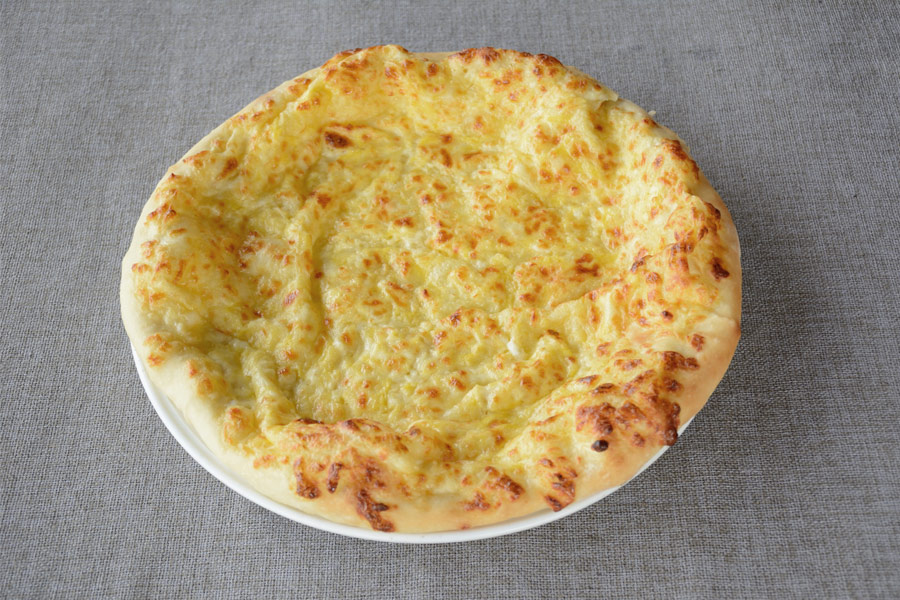
Mingrelians boast a unique culinary tradition that, although considered a subset of Georgian cuisine, features many distinct dishes and notable differences. One characteristic of Mingrelian cuisine is its liberal use of spices, resulting in notably spicier dishes compared to typical Georgian fare.
Some of the main dishes include:
- Megruli Khachapuri (Mingrelian-style khachapuri) - a round khachapuri resembling a pie, filled with cheese and topped with even more cheese on the baked crust. The khachapuri is generously coated with butter, making it both incredibly rich and delectable.
- Elardzhi - a porridge made from boiled corn flour, topped with slices of suluguni cheese that melt and become soft and gooey when placed on the hot dish.
- Gebjalia - delicate rolls crafted from melted suluguni cheese, which is shaped into thin layers and filled with a mixture of soft nadugi cheese and freshly chopped mint. The completed rolls are sliced into portions and served with matsoni as a dipping sauce.
- Satsivi - tender chunks of boiled chicken enveloped in a smooth sauce made from ground walnuts. A medley of spices, including coriander, khmeli suneli, saffron, garlic, cilantro, white wine vinegar, and nutmeg, lends the dish its distinctive flavor and aroma. The signature Mingrelian spiciness is achieved by adding hot red pepper. The finished dish is garnished with chopped herbs and pomegranate seeds.
- Kuchmachi - a delectable appetizer dish made from tripe. The base of the dish can feature beef, pork, or chicken offal, such as hearts, stomachs, and livers. The dish is seasoned with a generous blend of spices, including saffron, basil, and coriander, and served garnished with herbs and pomegranate seeds.
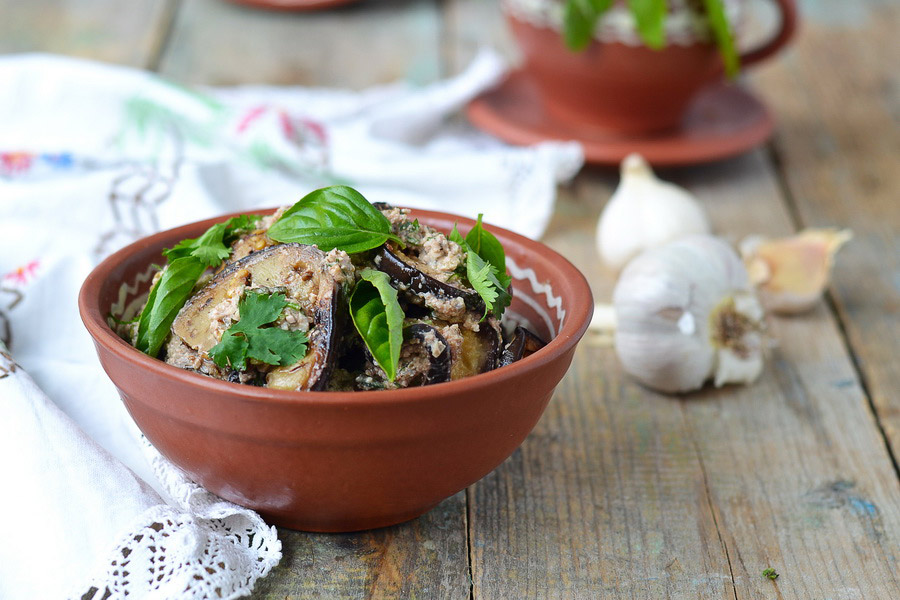
If you've yet to experience Samegrelo, consider exploring this remarkable region that sets itself apart from the rest of Georgia with its unique customs and intriguing traditions. The Advantour team is prepared to guide you through the area's most captivating attractions, immersing you in the fascinating and distinct world of the Mingrelians.

